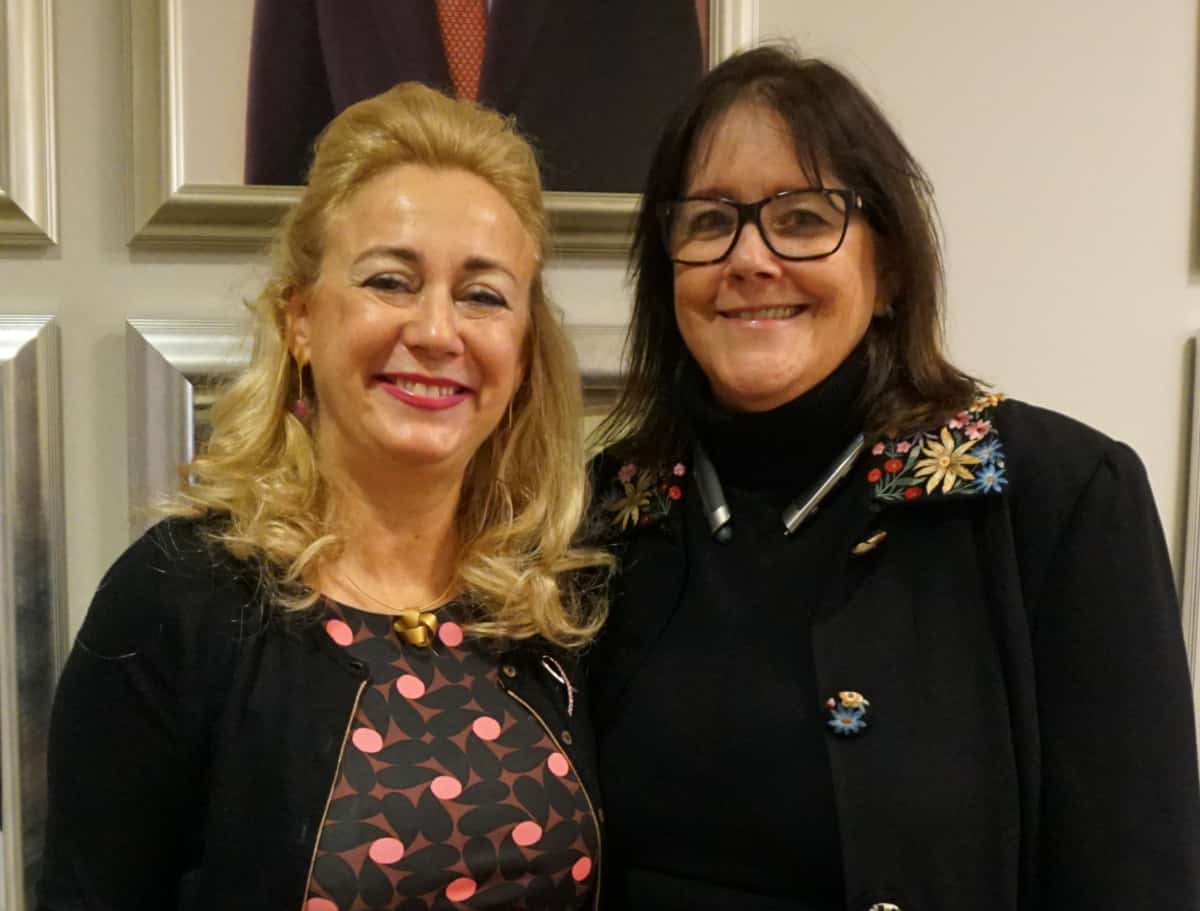Klimberg Lectureship Brings Breast Cancer Luminaries Back to UAMS
| Breast cancer treatments have improved dramatically over the last 20 years, with UAMS surgical pioneers such as V. Suzanne Klimberg, M.D., Ph.D., and Isabel T. Rubio, M.D., Ph.D., helping lead the way.
Rubio, of Madrid, Spain, spent time at UAMS starting in 1996 as a Virginia Clinton Breast Oncology Fellow. She recently shared some of the recent advances in breast treatments at the Suzanne Klimberg Endowed Lectureship in Breast Oncology.

Rubio, Klimberg, Ronda Henry-Tillman, M.D., and Maureen McCarthy, nurse practitioner, pose after Rubio presented the Suzanne Klimberg Endowed Lectureship in Breast Oncology.
“I feel like I am home again,” said Rubio, with UAMS friends, mentors and other longtime faculty in the audience, including Klimberg, Kent Westbrook, M.D., Ronda Henry-Tillman, M.D., and Maureen McCarthy, nurse practitioner. “I am who I am because of Dr. Klimberg. It changed my life, coming here.”
She recalled that she started her fellowship after Bill Clinton had been re-elected president. “It was an exciting time,” she said, adding that it was a new era for improving breast cancer surgical techniques and treatments working under Klimberg, then at UAMS.
Klimberg is now at the University of Texas Medical Branch in Galveston, where she is the Courtney M. Townsend, Jr., MD Distinguished Chair in General Surgery; vice chair for Administration, Department of Surgery; and professor and chief, Division of Surgical Oncology, Department of Surgery.
In her talk, “Breast Cancer Treatment: A Look at How it has Changed Over the Last 20 Years,” Rubio used a slide presentation to highlight new methods for reducing scarring, preserving breast tissue and avoiding surgical complications such as lymphedema, or swelling in the arms.
Toward the end of her presentation, she noted 2016 study findings in the New England Journal of Medicine. The study of more than 6,600 women with early stage breast cancer found that by looking at genetic risk factors, many breast cancer patients may not require chemotherapy. In fact, due to their low genetic risk, about 46 percent of breast cancer patients with high clinical risk for cancer recurrence may not have experienced a better outcome with chemotherapy.
The findings, Rubio said, are an example of how doctors can help breast cancer patients maintain a better quality of life.
“In the last years we have realized not all the patients have to be treated the same,” Rubio said after the lecture. “We need to select the treatment depending on the type of tumor and depending on the characteristics of the patient. Of course, prevention will be the key, but nowadays we need to be sure that our patients have a good quality of life and we cannot compromise that quality of life with our treatments. Because in the end, you know, you may be cured but your life may also be miserable.”
Westbrook told the audience afterward that he had been at UAMS for 56 years, and the most significant improvements to breast cancer treatments have been in just the last 35 – 40 years.
“Up until 1970 or so all we did was radical mastectomy,” the former Cancer Institute director said. “Clearly we’re doing better than we did. Ultimately in cancer, prevention is going to be very important, and until we get there, genetics studies are going to provide the next big breakthroughs.”
